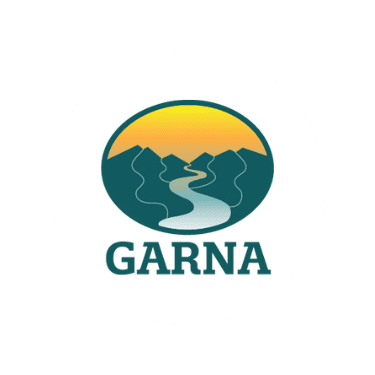
Note: This column originally ran in The Mountain Mail/Chaffee County Times as part of an ongoing environmental column series.
If you’re a kid who has participated in a GARNA or Trout Unlimited summer program or field trip, there is a good chance you know what a “benthic aquatic macroinvertebrate” is. If you’re an adult like me who didn’t receive many stream ecology lessons back in the day and reading “benthic aquatic macroinvertebrates” made your head spin, no need to fret! This month’s environmental column delves into these creatures and their incredible contributions to our aquatic ecosystems.
A benthic aquatic macroinvertebrate is a small creature that does not have a backbone and lives at the bottom of a body of water for all or part of its life. They are large enough to see with the naked eye and can be found living under rocks, on logs and nestled in sediment at a stream or lake’s bottom. We call them “macros” for short.
A wide variety of species comprise the macroinvertebrate family. Arthropods (creatures with exoskeletons and jointed appendages like dragonflies, caddisflies, riffle beetles and crayfish), annelids (segmented worms like leeches) and mollusks (creatures with a soft body and shell such as snails, slugs, mussels and clams) are all benthic aquatic macroinvertebrates despite their drastically different physical characteristics.
What unites this diverse party is their critical role in freshwater ecosystems.
Macros are an important source of nutrients for fish, amphibians, reptiles, birds and even mammals. Moreover, macros are major facilitators of nutrient cycling in aquatic ecosystems. Nutrient cycling is the process by which animals and plants consume matter from the environment, are nourished by nutrients present within that material and release those nutrients back into the environment when they die and decompose. A balanced ecosystem cannot exist without proper nutrient cycling. This process regulates levels of oxygen, carbon dioxide and water in the atmosphere and maintains nutrient availability for organisms on every tier of the food chain.
Macros play a key role in the nutrient cycle because they consume dead and decaying organic matter that other organisms would not. By recycling nutrients and energy into the environment that would otherwise be wasted, macros maintain the efficiency and sustainability of aquatic ecosystems.
Aquatic biologists divide macros into four functional feeding groups to illustrate their varying contributions to the nutrient cycle: shredders, collectors, grazers and predators. Shredders like caddisflies and stoneflies eat leaves, woody debris and other vegetation. Collectors such as riffle beetles have an affinity for even smaller particles of organic matter and chow down on shredders’ scraps. Grazers such as right-handed snails keep algae growth in check by feeding on algae, fungi, aquatic plants and detritus. Predators like dragonflies eat other aquatic macroinvertebrates.
Due to their importance in the food web and nutrient cycling, macros are a “bioindicator,” which humans survey to monitor environmental change and health.
Different types of macros display varying sensitivities to pollutants and consequent nutrient dysregulation in a body of water, so we can tell if a body of water is polluted by the quantity and diversity of macro species that live in a stream. If a stream has a high number of macros that are very intolerant of pollution such as stoneflies and caddisflies, then it is likely that that stream is healthy. Pollution-intolerant macros cannot survive, however, if a stream’s nutrient levels become dysregulated by pollution. For instance, if acid mine drainage increases levels of heavy metals in a stream, caddisflies and stoneflies will die, and only macros like aquatic worms and rat-tailed maggots (which are very pollution tolerant) will survive.
GARNA keeps an eye on macro populations in our watershed. As a part of our partnership with RiverWatch, a statewide volunteer water-quality program, GARNA samples aquatic macroinvertebrates annually at sites along the Arkansas River and its major tributaries.
If you are interested in further familiarizing yourself with benthic aquatic macroinvertebrates, email chris@garna.org so we can contact you next time that GARNA surveys macros.
Rose Nadelhoffer is the programs development and outreach coordinator at the Greater Arkansas River Nature Association. Have a burning environmental question? Email rose@garna.org.

GARNA works with communities of the upper Arkansas River valley to foster the stewardship of the region’s natural environment and the resilience of our communities.